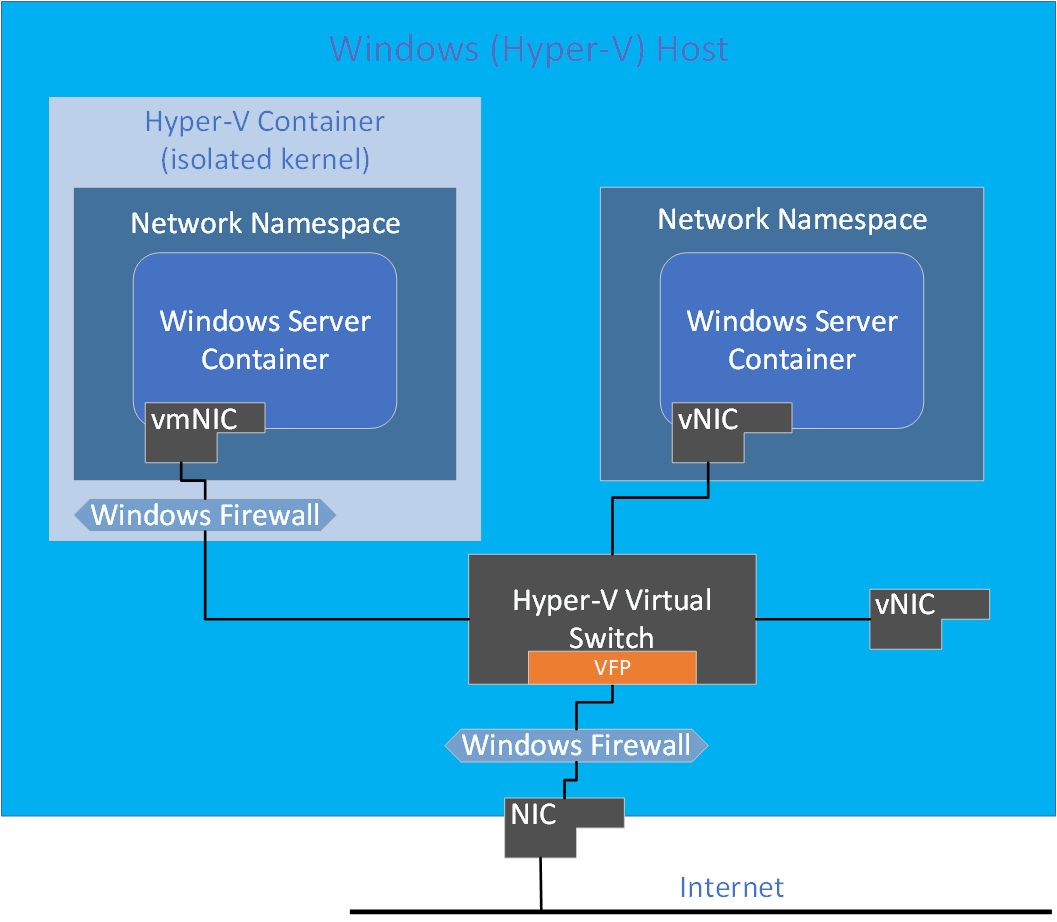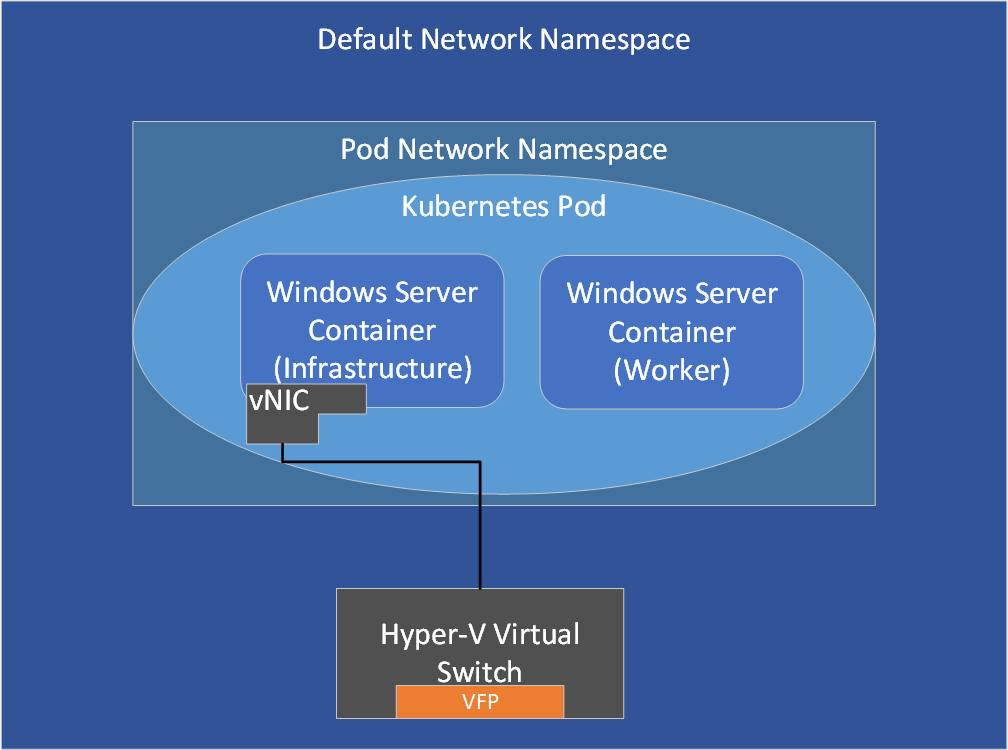Network isolation and security
Applies to: Windows Server 2022, Windows Server 2019, Windows Server 2016
Isolation with network namespaces
Each container endpoint is placed in its own network namespace. The management host virtual network adapter and host network stack are located in the default network namespace. To enforce network isolation between containers on the same host, a network namespace is created for each Windows Server container and containers run under Hyper-V isolation into which the network adapter for the container is installed. Windows Server containers use a host virtual network adapter to attach to the virtual switch. Hyper-V isolation uses a synthetic VM network adapter (not exposed to the utility VM) to attach to the virtual switch.

Run the following Powershell cmdlet to get all network compartments in the protocol stack:
Get-NetCompartment
Network security
Depending on which container and network driver is used, port ACLs are enforced by a combination of the Windows Firewall and Azure Virtual Filtering Platform (VFP).
Windows Server containers
The following values use the Windows hosts' firewall (enlightened with network namespaces) as well as VFP:
- Default Outbound: ALLOW ALL
- Default Inbound: ALLOW ALL (TCP, UDP, ICMP, IGMP) unsolicited network traffic
- DENY ALL other network traffic not from these protocols
Note
Prior to Windows Server version 1709 and Windows 10 Fall Creators Update, the default inbound rule was DENY all. Users running these older releases can create inbound ALLOW rules with docker run -p (port forwarding).
Hyper-V isolation
Containers running in Hyper-V isolation have their own isolated kernel, and therefore, run their own instance of Windows Firewall with the following configuration:
- Default ALLOW ALL in both Windows Firewall (running in the utility VM) and VFP.

Kubernetes pods
In a Kubernetes pod, an infrastructure container is first created to which an endpoint is attached. Containers that belong to the same pod, including infrastructure and worker containers, share a common network namespace (such as the same IP and port space).

Customizing default port ACLs
If you want to modify the default port ACLs, review the Host Networking Service topic before changing the ports. You'll need to update policies inside the following components:
Note
For Hyper-V isolation in Transparent and NAT mode, currently you can't reconfigure the default port ACLs, which is reflected by an "X" in the table below:
| Network driver | Windows Server containers | Hyper-V isolation |
|---|---|---|
| Transparent | Windows Firewall | X |
| NAT | Windows Firewall | X |
| L2Bridge | Both | VFP |
| L2Tunnel | Both | VFP |
| Overlay | Both | VFP |